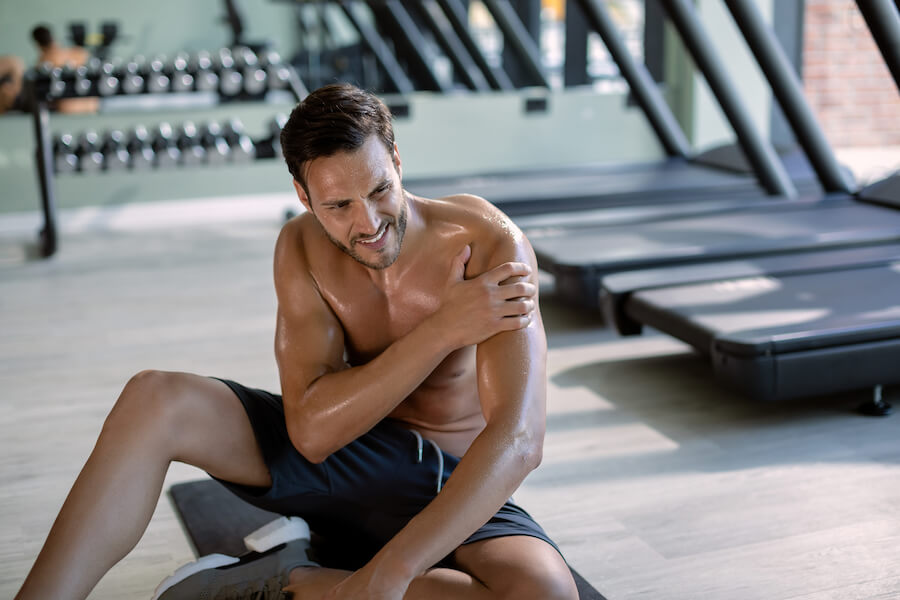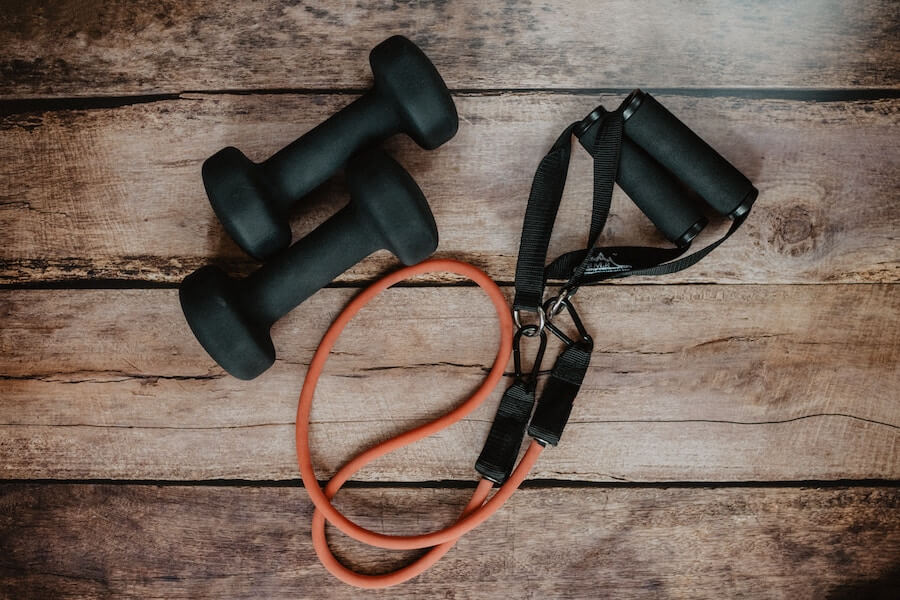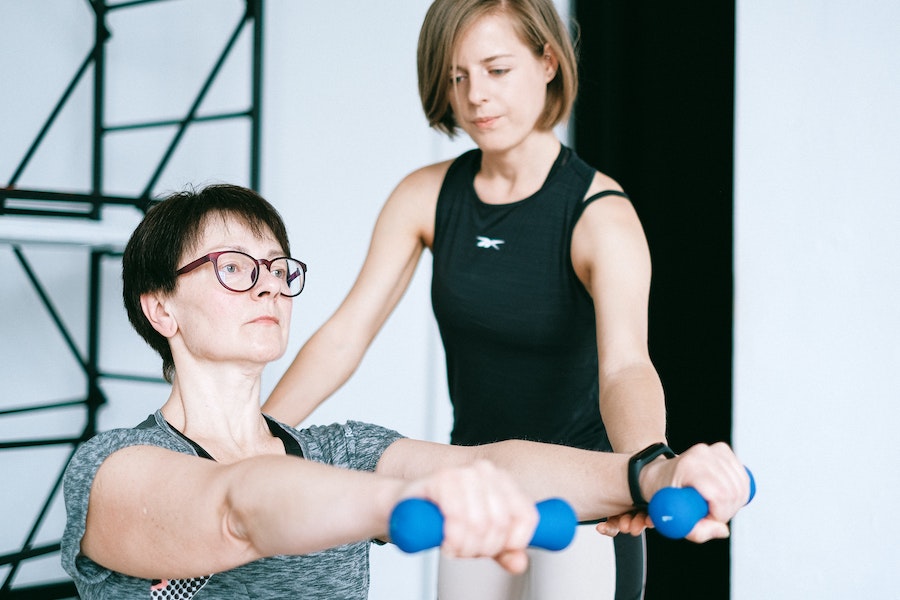Jobe’s exercises were developed and named after Dr. Frank W. Jobe, an American orthopedic surgeon.

Dr. Jobe is widely recognized for his contributions to the field of sports medicine, particularly in the area of shoulder injuries and treatments.
He was also a long-time Los Angeles Dodgers professional baseball organization physician. Jobe’s exercises have become a commonly used assessment tool in orthopedics and sports medicine.
It is used for identifying shoulder issues and guiding treatment recommendations. Here’s everything to know about Jobe’s exercises.
When should you consider Jobe’s exercises?
The Jobe’s exercise is a physical examination used to assess the integrity and strength of the supraspinatus muscle in the shoulder.
Dr. Jobe developed a series of light-dumbbell exercises to strengthen the shoulders. It is commonly used in clinical settings, such as orthopedic offices or sports medicine clinics.
Usually, it is administered by healthcare professionals who specialize in shoulder evaluations.
Healthcare professionals use Jobe’s exercise to assess the supraspinatus muscle’s strength and function. It can be performed when there is a suspicion of a rotator cuff tear.
The exercise helps identify weakness or pain that may indicate a tear or other rotator cuff-related pathology. Also, Jobe’s exercise can be used to evaluate shoulder impingement syndrome.
This is a condition where the rotator cuff tendons get pinched or compressed during certain movements. It can reveal pain or weakness associated with impingement.
How is Jobe’s exercise performed?
There are different versions of Jobe’s exercise, performed mainly by standing, sitting, or lying down. Some that are performed while standing include:
- Shoulder Flexion
- Shoulder Abduction
Also, some exercises are performed horizontally like:
- Horizontal Abduction
- Horizontal Adduction
- Side-lying External Rotation
- Side-lying Internal Rotation
- Shoulder Extension.
Others, like the shoulder shrugs, are performed while sitting.
What equipment do you need?
You will need a resistance band or a lightweight dumbbell of about 2-5 pounds. This should provide adequate resistance during the exercises.
You can increase the resistance by using a thicker resistance band or a heavier dumbbell as you get stronger.

Getting into position
The common starting point of most jobe’s exercises is with your feet shoulder-width apart. Hold the resistance band or dumbbell in your hand on the side you want to exercise.
Some of the common Jobe’s exercises include:
Internal rotation exercise
The internal rotation exercise targets the muscles responsible for internal rotation, primarily the subscapularis muscle. To do the internal rotation:
- Place your elbow bent at a 90-degree angle. Tuck them against your side, palm facing upward.
- Keep your elbow against your side and slowly rotate your forearm inward, bringing your palm towards your stomach.
- Pause for a moment and then slowly return to the starting position.
- Breathe naturally throughout the exercise. Inhale on the way up and exhale on the way down.
External rotation exercise
Alternatively, the external rotation can be done with your elbows tucked against your side and your palm facing downward.
- Keep your elbow against your side
- Slowly rotate your forearm outward, away from your body.
- Repeat for the desired number of repetitions, typically 10 to 15, then switch sides and perform the exercise with the other arm.
Prone scapular retraction exercise
This exercise targets the muscles responsible for scapular retraction. To do it:
- Lie prone on the table, with your shoulders off of the end of the table.
- Keep your elbows straight and your arms hanging down. Raise your arms at a 45º angle to ear level, with your palms facing down.
- Slowly lower the arms to the starting position and repeat.
Prone horizontal abduction exercise
This exercise targets the muscles of the posterior shoulder and upper back. It is performed lying face down on a bench or exercise mat. To do it:
- Your arms hanging down toward the floor, palms facing each other.
- Keep your arms straight, and lift them out to the sides until they reach shoulder level
- Engage your core and squeeze your glutes to stabilize your body.
- Keep your head in a neutral position, looking down towards the mat or bench.
- Continue lifting your arms until they are in line with your body, forming a “T” shape.
- Hold this position momentarily, focusing on squeezing your shoulder blades together.
Shoulder abduction exercise
This exercise targets the deltoids and helps strengthen the muscles responsible for lifting the arm away from the body. To do it:
- Start with your arms at your sides.
- Slowly raise both arms to the sides until they reach shoulder level.
- Engage your core muscles to maintain stability throughout the exercise.
- Pause for a moment and then lower your arms back down to the starting position.
Full can exercise
This particular exercise is a shoulder-strengthening exercise that targets the supraspinatus muscle. To do it:
- Stand with your arms at your sides, holding a light dumbbell in each hand.
- Keep your thumbs pointing up and your palms facing forward.
- Raise your arms forward and slightly outward, mimicking the motion of pouring from a whole can.
- Lift your arms until they are parallel to the floor. At this point, your arms should be in a “Y” shape, similar to the letter “Y” when viewed from the front.
- Hold this position for a few seconds, focusing on contracting your shoulder muscles. Be mindful not to shrug your shoulders or allow your elbows to bend.
- Slowly lower your arms back to the starting position.
Empty Can Exercise
The Empty Can Exercise explicitly targets the rotator cuff muscles. Here’s how you can perform Jobe’s Empty Can Exercise:
- Stand upright with your feet shoulder-width apart and your knees slightly bent.
- Hold a light dumbbell (usually 1-2 pounds or even a can of soup) with your palm facing down. This represents an “empty can.”
- Start with your arms at your sides and your elbows bent at 90 degrees as if you were holding two cans at your sides.
- Keeping your elbows bent, slowly raise your arms in front of you to shoulder level. Make sure your palms are facing down throughout the movement.
- As you lift your arms, rotate your shoulder so that your thumbs point downward as if pouring out the contents of the “cans.”
- Hold the raised position for a second or two, focusing on engaging the muscles around your shoulder blades.

How often do you perform Jobe’s exercises?
Aim to perform Jobe’s exercises 2-3 times per week. Begin with three 10-15 repetitions and work your way up. Start with light resistance and gradually increase the intensity over time.
If you experience pain or discomfort during the exercises, stop and consult a healthcare professional or a qualified trainer.
Can you perform them at home?
While you can perform them at home with minimal equipment, it is highly recommended to consult a professional. Proper technique and interpretation of the results are necessary to get it right.
After Jobe’s exercise, what next?
For the exercise to be effective, follow the treatment plan prescribed by the healthcare professional. This may involve attending physical therapy sessions and taking prescribed medications as directed.
You might have to modify your activities to avoid aggravating the condition and adhere to any other recommendations provided.
Regular follow-up appointments with the healthcare professional will help monitor progress.

Some people collect expensive old cars, and I’m into collecting bikes. I have 15 different bikes: special mountain bikes, sportbikes, professional, amateur, and city bikes. My friends and colleagues call me a ‘bike expert’ because I give advice on how to choose the right bike.
I’m also a massive fan of gym culture and heavyweight workouts. I met Alan at my local gym, and we’ve become friends quite soon. His idea of starting a sports blog seemed interesting to me, so I agreed to help.





